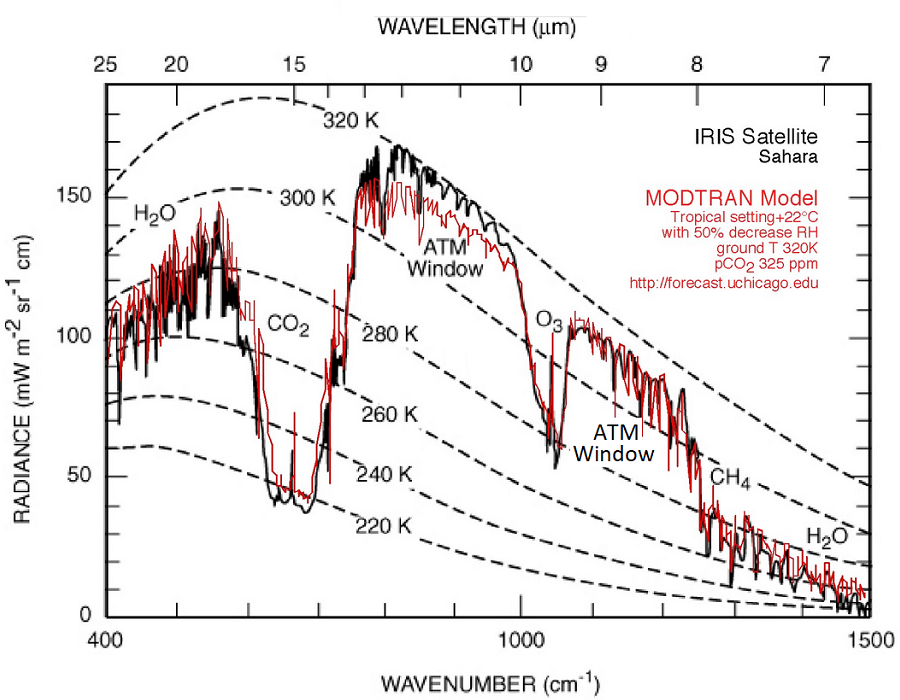2. Thermal Radiation
Emission from the Earth
The solar radiation absorbed by the Earth must be dissipated again so that there is a net equilibrium between absorbed and emitted energy. Only then will the average temperature of the Earth remain constant on average. This happens through thermal radiation, heat radiated from the Earth's surface in the direction of space. We have seen it before: bodies with a temperature of about 20°C (or: 300 K) radiate in the wavelength range around 10 μm.
However, the radiation emitted by the Earth's surface has to enter space by penetrating the atmosphere. There are - as described on the previous page - trace gases that absorb radiation, especially carbon dioxide and water vapor. In the wavelengths from 8 to 13 μm, their absorption is low, so here the radiation reaches space without too many losses. This spectral range is called the atmospheric infrared window.
Infrared measurements with satellites show how the emitted radiation from the Earth's surface is influenced by the atmosphere. In the diagram is a spectrum (black line) measured with the IRIS spectrometer on the NIMBUS 3 satellite with a view of the Sahara desert, compared to a model calculation of the radiative transfer (red line). In the model, a temperature of 320 K (or: 47°C) is assumed.
There are also emission graphs for black bodies with temperatures between 220 and 320 K entered as dashed lines in the graphic. It can be seen that in the range from 8 to 13 μm - with the exception of an area marked with ozone (O3) - the measurement and the model approximates the curve of a black body with a temperature of 320 K very well. The spectrometer is measuring the radiation emitted by the warm Saharan soil.
Areas with smaller values of the measured and modelled radiance are labeled with the trace gases, the absorption of which reduces the brightness: water vapor (H2O), carbon dioxide (CO2), methane (CH4) and ozone (O3). Absorption means: only a limited amount of radiation reaches space, or none at all. In fact, the trace gases at lower altitudes are warmed up by the radiation emanating from the Earth's surface. The trace gases in these layers then radiate back towards the ground, in what is referred to as atmospheric back radiation.
This is the greenhouse effect.

Radiance of the Earth measured in space (black) and modelled (red) at wavelengths in the infrared range from 7 to 25 μm (upper scale). The wavenumber (lower scale) corresponds to the inverted wavelength 1/
MODTRAN® stands for 'MODerate resolution atmospheric TRANsmission', a computer model for simulations of the atmospheric radiative transfer.
Source: MODTRAN Infrared Light in the Atmosphere, The University of Chicago, USA.
An increase in the amount of greenhouse gases increases the greenhouse effect and leads to a warmer climate.
